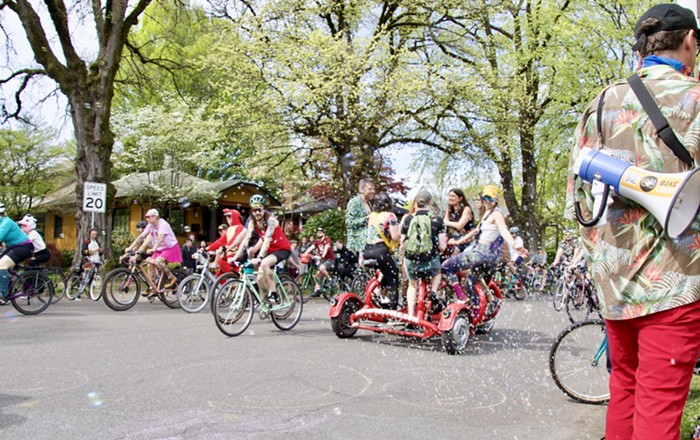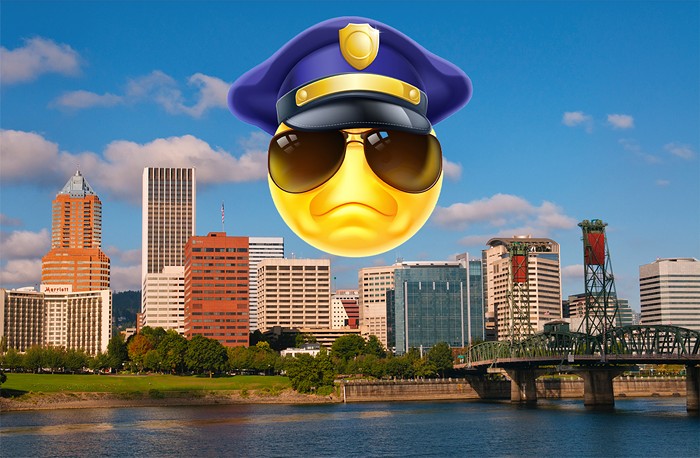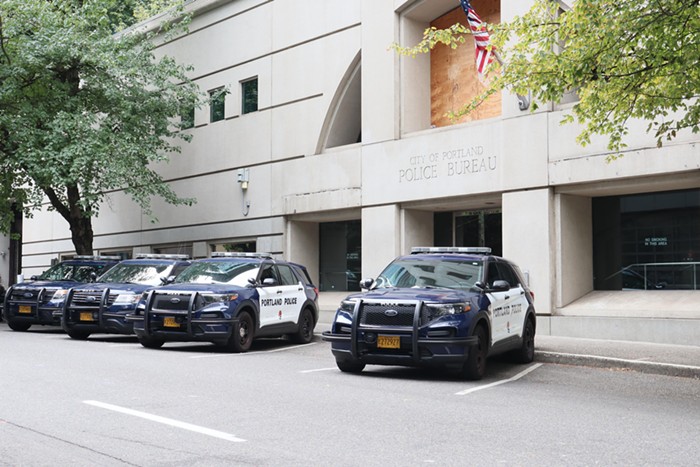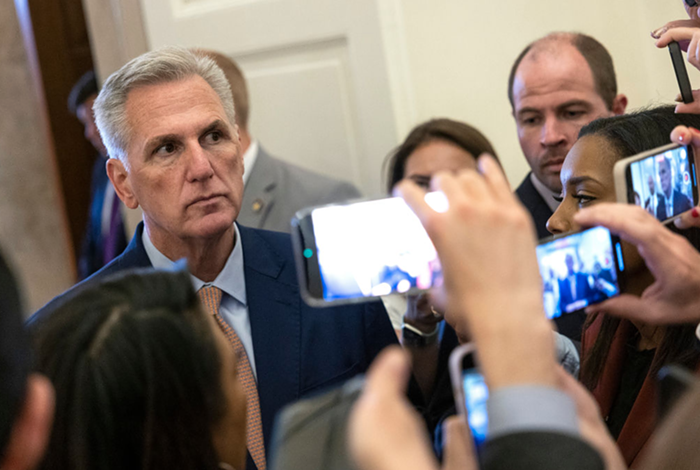
- SE 26th and Powell, seen looking southbound on 26th.
Street safety is often debated in this town, but it's relatively rare for an incident to shock Portland's consciousness like yesterday's mayhem in Southeast.
An avid cyclist and bike racer named Alistair Corkett—just 22—was biking south on SE 26th when an oncoming pickup driver didn't bother to yield as he turned left onto Powell. The vehicle plowed into Corkett, cutting off his leg in the process. He's expected to survive the injuries.
There's no word yet on charges against the driver, a 42-year-old named Barry Allen, but cops say he wasn't drunk or high when he failed to stop (he does, however, have a couple convictions for careless driving in his past, the most recent from 2013). Instead, criticisms from the active transportation community have turned to an old foe: SE Powell—a state-owned highway that's also a city street. And a magnet for injury and death.
Mayor Charlie Hales has called repeatedly for control of Powell—technically a stretch of US Route 26—to switch from the Oregon Department of Transportation's hands to the city's. When a woman was hit and killed while trying to cross Powell in late 2013, he told the Oregonian: "We killed a 70-year-old woman on that main street this weekend with a car because it’s a terrible place to walk. ODOT owns that street. ODOT has not, as you’ve documented, put that street in any kind of condition to support the neighborhoods that are around it.”
Now, in light of Corkett's awful ordeal yesterday, activists want to force decision makers to act. Transportation activist Dan Kaufman is calling for a "super-legal slow-down" at and around SE Powell and 26th for tonight's rush hour. He's envisioning dozens of people—whether in cars or on bikes, skateboards, or foot—taking their sweet time while traversing crosswalks and driving through the intersection starting at 4 pm.
"It shouldn't be too hard to slow it to a crawl," says Kaufman, who was visiting nearby Cleveland High School when the Mercury reached him. "We'll just clog the heck out of it. We may do it every day until we get some changes."
What changes? Some of the same kinds of things Hales is talking about. Kaufman wants fixes that calm Powell's surging traffic and make it safer and easier to cross. In discussing his planned protest with Cleveland High administrators, he says they complained that the intersection is a magnet for accidents, and that students have been hospitalized lately.
"The highway has to take secondary precedence," he says. "We want this treated like any other city street."
It's true that Corkett wasn't hit by a car that was speeding down Powell. From the police description, it appears he was hit because Allen wasn't paying attention. But Kaufman insists Powell's high speeds played a part, because the driver might have been accelerating out of the turn to reach the boulevard's higher speeds.
"This isn’t a bicycle issue," Kaufman says. "It’s a human being issue. Human beings are inside of cars and they’re being injured and killed everyday."
Fatal accidents involving cyclists are far less common in Portland than crashes where drivers or pedestrians are killed. Since late 2012, there's been just one crash in city limits where a cyclist was killed. Dozens of pedestrians and drivers were killed in that time.

Injuries, of course, are far more common. Between 2004-2013 there were 73 traffic injuries attributed to the intersection of Powell and 26th, according to the Portland Bureau of Transportation. Of those, 60 were injuries to motorists, 8 were to cyclists. (Bikeportland.com notes injuries are rampant along that entire stretch of Powell, designated by PBOT as a high-crash corridor.)
Beyond angering a bunch of motorists, it remains to be seen whether the planned action(s) will have any result. While talking to the Mercury, Kaufman got a call from a staffer in Hales' office. The mayor can't make it this afternoon.













